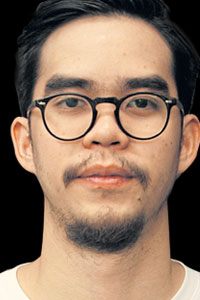The Thai arts scene has become more politically engaging in the past couple of years. The 2014 coup, of course, has been the most significant transition point in this respect. Before, it was very much about making sense of the colour-coded divide, trying to get into the mentality behind such ideological conflict. In the post-coup era, however, it can be said that the ideas and interests have become somewhat more unified. Artists have become increasingly aware of and responded more to the authoritarian power and the climate of fear and rights restriction.
For viewers, having artists who have fearlessly and ceaselessly been speaking the truth is something to be thankful for. On stage or in gallery spaces, it's as if we have found ourselves a refuge of compassion and understanding, far from the maddening reality.
Yet, as we are soon entering the fourth year under the military regime, one starts to wonder whether it's time we rethink the role of the arts at this difficult time. So far, it has succeeded magnificently in provoking the public to question the society they are living in and providing a sense of empathy. But with almost three years having passed, can the role of arts be more challenging and bring about real change?
One of my favourite art shows since the coup was Chiang Mai-based artist Mit Jai Inn's solo show "Junta Monochrome" last year at Gallery VER. It consisted of a series of massive canvases on which all colours imaginable were freely smeared and layered. His centrepiece work was a shallow rectangular pool on which he put a large canvas with chunks of paint and water. It was a work-in-progress piece, and viewers would see water gradually evaporate and paint slowly spreading across the surface.
As for stage performances, the show which has remained strikingly relevant until now was The Test Of Endurance by B-Floor's Jarunun Phantachat, also from last year. In the show all we watched were two performers as they continually danced the same traditional Thai dance moves without stopping. With no air-con on and windows shut, the only rule was that spectators could leave the theatre whenever they wanted but they could not come back.
There's no doubt as to how excellent both works were, but on looking back now, I can't help but judge their efficiency in playing this political game. How many viewers understood that by letting the paint dry by itself on the canvas in the pool, Mit stressed the importance of the strenuous, yet necessary, process of letting things take their natural course -- something Gen Prayut has yet to learn about? How many understood that outside of theatre, there's another test of endurance going on in the real world up until today?
The question, then, is whether good art can also be efficient art in this current political landscape? Timely is the opening of a group exhibition, "Condemned To Be Free", by Kritsada Duchsadeevanich and Tawan Wattuya at WTF Gallery, and it could be the answer to the question raised because it is challenging both the process of art making and the role art can play from now on.
On the third floor, the paintings are not in Tawan's usual watercolour style because he has worked closely with student members of the New Democracy Movement, who were imprisoned for their political activities. Tawan took sketches the students made and put them on display. He also came up with his own paintings in response to the conversations he had with them.
"I am also a human being!" reads the sentence written painted roughly across the wall by one of Tawan's collaborators. On another side, a group of stars were coarsely drawn, and one of the student members said she drew that because they were the symbol of hope when she saw them from her prison window.
This is refreshing because for once art takes activism on board and what may be vague due to the artist's style or preference, in case of Mit's abstract paintings or Jarunun's performance, is given a clear voice from ordinary people who experienced the political plight first-hand. By letting ordinary people into the process of art making, the art world has suddenly become a more easily accessible one.
Admittedly, it's not clear how exactly change can be actually brought about, but now that art has joined forces with activism and the boundary between the art space and the real world is consequently blurred, we are perhaps a step closer than before.
Kaona Pongpipat is a writer of the Life section of the Bangkok Post.
